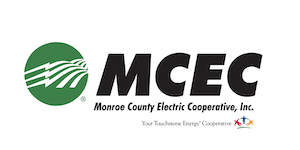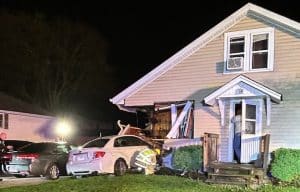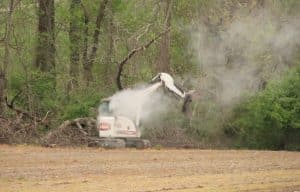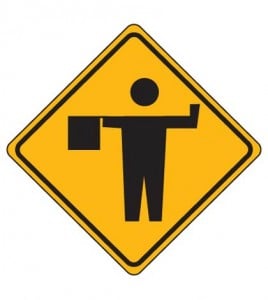CHS combats construction costs
Columbia High School has been in the midst of major construction for the past few months – with planning for the project stretching back at least two years – in an effort to prepare the school for an increase in the city’s population and provide several amenities the building has long lacked.
With the project featuring as a point of discussion at most every recent meeting, Columbia School Board member Adam Hemken and Columbia Superintendent of Schools Chris Grode spoke with the Republic-Times to offer some perspective on how the project and its estimated cost have changed.
Hemken said the initial estimate for the construction stood at about $45 million. That figure has increased by around 10 percent to be somewhere between $48-50 million.
He further explained the reason for this increase is largely due to some additions and bids coming back higher than expected for phase two of the project, mainly centered around the addition of a competition gym.
In comparison, the bids for the first phase of the project – adding a number of classrooms, administrative spaces and an auditorium – came mostly in-line with the original estimates, with the bid package for the first phase being approved in August for about $22.4 million
“The first phase came in pretty much right at budget, but the second phase, which is the gym, is what’s coming in a bit higher,” Hemken said. “Part of that is due to the fact that we added a few hundred square feet so we could have a storm shelter that was not in the original plan.”
Grode also spoke to how certain items for phase two have come back at a higher bid than was estimated, though some items have come back lower as well.
He specifically pointed to how the gym was originally meant to have brick walls, though an increase in price over the project’s lengthy planning process meant that precast concrete – typically a more expensive option – was more cost effective.
To help compensate for the cost of phase two being higher than anticipated, a number of design aspects for phase three have been adjusted over time.
Phase three is meant to focus on renovating and updating the existing high school structure.
Hemken said much of the rooms set to be built for this phase are expected to be whiteboxed for the time being. Reiterating discussion from several recent meetings, he noted the construction part of the project is still planned, though some of the rooms that are built might simply be unfurnished or decorated.
One example of this that’s been discussed among the board concerns green room space for the auditorium. The room will still be built, providing students with a dressing room space, but the room might not have lockers or other such features, with these coming in the future or potentially being part of a student project.
“Part of the reason for the project is for future growth, so if we don’t need all of the things right now, then we were looking for areas that we could whitebox,” Hemken said. “Then in the future, when student body population grows, it’ll be very cost effective to simply build those four classrooms out.”
Grode also discussed how changes like this have been entertained. He spoke about how the current library space is intended to be used as an area for life skills classes.
While this is still the plan, he said the architecture design of the space has been adjusted to try and cut down on the cost of doing more significant changes.
“There have been those design changes to adjust with that, and that’s where Cobalt, Poettker and FGM, our architects, have been really very nice to work with, because when the numbers come in and we need to make some changes, we start saying, ‘How we can we get what we originally designed without tearing down as many walls, without having to put up as many walls? Can we come up with a more efficienct way of doing this?’” Grode said.
Grode also discussed how the school board has made an effort to be proactive in purchasing materials and items for the project, such as with the precast concrete for phase two construction still set to begin some time from now.
Additionally, Hemken emphasized how the school board has been looking for any place to save money on the project, pointing especially to how the hill behind the multipurpose field’s press box has been designated for use as dirt for construction rather than having to purchase dirt elsewhere.
Perhaps the largest item of concern for the board throughout this project is the district’s tax rate, as board members on numerous occasssions have stressed how important it is to keep the rate flat for Columbia residents.
“That has been one of the top priorities. It’s kind of a no-go,” Hemken said. “Based on our conversations, I believe the board is unanimous that we will not be incresaing the tax rate as part of the project.”
Grode spoke about the relationship between the tax rate and the equalized assessed value of properties in the taxing district.
With 20 years of EAV history for the community in mind, he pointed out how consistently the EAV for properties in the district has grown. As the value of individual properties has gone up, this has allowed the school district to levy more in tax funds while the actual tax rate has remained largely unchanged.
Grode said the estimates for the project’s cost were made with an exceptionally conservative estimate on EAV growth in the community. He suggested that even with no growth in EAV, the district could likely still manage to pay for the project were it on the low end of original estimates.
Grode further said the budget can stand to go higher than the minimum given that a growth in EAV is, based on recent history, more likely than no growth at all.
“Right now, we’re projecting out extremely conservative numbers,” Grode said. “We’re looking for no growth in our EAV, and that can get us around that $40 million without raising our taxes. However, we are going to see growth in our EAV, so going up a little bit in our borrowing is possible because we know that every year our property values are gonna grow. The problem is that we don’t know how much they’re gonna grow, so that’s a guessing game.”
Hemken echoed this sentiment, summarizing that the district’s borrowing power is anticipated to increase more than the cost of the project.
“We’re still very much on target – even with a very conservative EAV forecast – that we will be able to do everything in phase two and everything in phase three since we’ve revised our scope,” Hemken said.
With the cost and scope for the project changing from what they were anticipated to be at the very start of the planning process, Grode spoke to the important items that are firm, noting the auditorium, gym, science labs and improvements to the school’s security among other things.
“There’s been some bumps in the road which you’re hearing at the board meetings, but I’ve been extremely impressed with Greg and Adam’s efforts with FGM, Poettker and Cobalt Construction in making sure that we don’t get off the rails,” Grode said.






